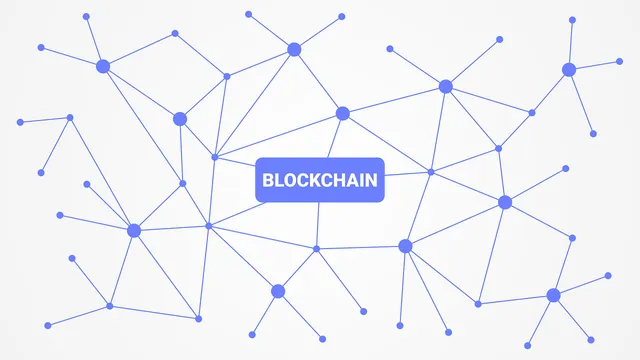INTRODUCTION
Considering the scale of development in the marketplace of renewable energy resources through expanding the use of blockchain, the authors are convinced that the cooperation will be beneficial for the stakeholders. From the perspective of the current authors, the trade in renewable energy resources previously confronted difficulties linked with the centralization of the process, its high transactional costs, and poor transparency levels. With blockchain integration, users can transact without the need for intermediaries and have access to a secure environment where transactions are time-stamped. These are changes that are subsequently re-shaping the energy generation and distribution model.
The ability to openly record energy generation and consumption is one of the distinguishing features of blockchain technology. Therefore, from its source up to the end user, renewable energy can be tracked. Blockchain also has the potential to transform how energy is transacted since smart contracts lessen the requirement for intermediaries, making energy transactions smoother. These features, in particular, for renewable sources where tracking is essential in proving sustainability promises, are extremely useful.
The integration of blockchain technology allows for the development of alternative energy systems such as microgrids which can operate independently and are not interconnected to a large centralized grid. Thus, communities are able to generate, store and trade energy locally.
- ENABLING PEER-TO-PEER ENERGY TRADING
With blockchain technology, individuals can engage in P2P transactions without the involvement of utility businesses and the services they offer. In a decentralized system of ledgers, where an energy producer and consumer make a transaction, it can easily be recorded as no intermediary is needed. This minimizes expenses and guarantees appropriate pricing.
Smart contracts enable this structure to work. This self-executing contract allows for real-time transactions by matching willing buyers and sellers under certain conditions. For example, a homeowner with solar panels has the option to sell his additional power to his neighbor with the claim that the deal will be concluded in the blockchain instantly. Such interactions promote local energy markets and alleviate central dependency.
In addition, the use of P2P trading systems helps to achieve redundancy in energy utilization. Consumers are able to buy more energy from renewable sources which is in line with their ideals. Blockchain helps to integrate an energy market which is divided into many smaller markets thus allowing small producers to be active participants in the market promoting inclusion and sustainability of the energy ecosystem.
- IMPROVING THE LEVELS OF TRANSPARENCY AND TRUST THROUGH TRACEABILITY
With the blockchain technology, the traceability, origin, and authenticity of renewable energy can ever be questioned as it generates tamper free registers. Blockchain logs solar energy generation, making it easier to verify its source. This traceability guarantees consumers and firms that the energy they acquire is indeed renewable.
Evidently, the energy certification system i.e. renewable energy certificates (RECs) gain a lot through the integration of the blockchain. In the past, most of such systems have been susceptible to fraud and double counting. With the use of the blockchain, these risks are erased since the whole system consider issuance, trading and verifying certificates. Each REC is attached to a specific energy unit and hence its uniqueness and validity.
Notably, renewable energy policies can also be assisted through the use of block chain by the governments and the regulatory authorities. They can use the data on energy production and energy consumption that is live so as to assess efforts geared towards attainment of sustainability targets as well as ensure Environmental compliance. All stakeholders can trust the system and as a result, more and more renewable energy options for the countries will be embraced.
- ENABLING DECENTRALIZED MICROGRIDS FOR SELF-SUFFICIENCY IN ENERGY NEEDS
The term microgrid refers to a localized energy grid that can operate autonomously from the national grid. The use of blockchain enhances the capabilities of microgrids by enabling better energy optimization, procurement, and trading. This removes the need for centralized power facilities, enabling communities to address their energy requirements autonomously.
With the help of smart contracts, energy is traded among the members of a blockchain microgrid network. For example, if a family harnesses more solar energy than it can use, it can sell it to a form of a neighbor's whole house for some agreed amount. All of these exchanges are made possible by blockchain technology, which enhances trust among people by allowing for a transparent transaction.
The management of microgrids also includes other important factors such as energy storage. With the support of blockchain, energy storage technologies like batteries can be incorporated into the trade system. So, any additional pressure can be kept and sold if necessary in the future, minimizing loss and maximizing the use of the available resources. In this way, the world will have a strong energy system that will be flexible in meeting the varying supply and needs of the consumers.
- MOBILIZING INVESTMENT AND CROWDFUNDING IN RENEWABLE PROJECTS
The features of blockchain make technology more effective as it allows for investment through a network that is decentralized, open and easy to use. For instance, developers can create a token which is a fractional ownership share in an investment project and raise funds directly from the public or institutional investors. This makes the funding of renewable energy projects much easier and more accessible.
There are many benefits of tokenized investments including the ability to sell them in secondary markets. This gives investors flexibility and access to liquidity. Additionally, blockchain also allows all transactions to be recorded, thus increasing the level of trust between the developers and the potential investors. The existence of such transparency reduces fraud and risks, and boosts participation in projects such as renewable energy.
It is also possible to crowdfund smaller renewable projects, such as solar farms using blockchain. Such projects can raise the necessary funds to go into operation through many different supporters pooling their finances together. The fact that blockchain technology bridges many investors to different projects around the world greatly expedites the shift towards a better energy system.
CONCLUSION
The emergence of a revolutionizing contact has been brought about by the technological innovation that is known as blockchain in renewables trading with applications for peer-to-peer transactions among users to enhance transparent interactions and enable decentralized mini-grids. The traceability options create trust and democratize access through crowdfunding for investments in renewable energy.
Probably the best place for blockchain technology to fit into operation is where there is a global revolving trend towards greater sustainability-it could well be in energy systems as the most efficiently, transparently, and equitably working modes. With such integration, blockchain would help in the reduction of the inherent inefficiencies that have been offered to dearly and encourage additional innovations that would greatly contribute toward the climate goals of this world.
.webp)

.jpg)
Upvoted! Thank you for supporting witness @jswit.
Downvoting a post can decrease pending rewards and make it less visible. Common reasons:
Submit